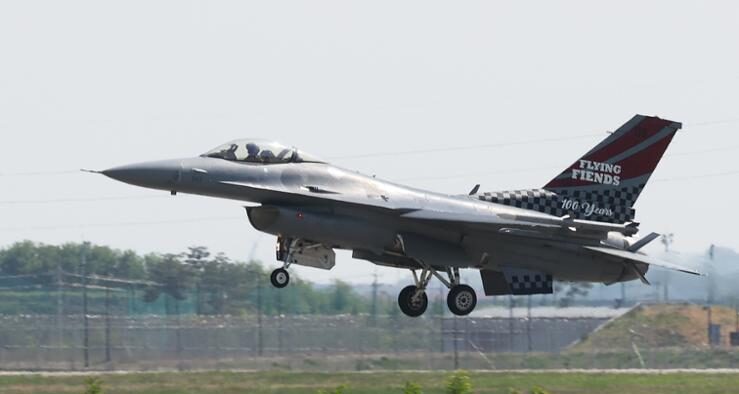WNAM MONTORING: The U.S. military’s investigations into three recent F-16 fighter jet crashes in Korea remain ongoing, a U.S. Air Force official has said, as safety concerns remain unabated over the series of crashes.
Last May, a U.S. F-16 crashed in Pyeongtaek, 60 kilometers south of Seoul, followed by another crash into the Yellow Sea in December and a third one into the waters in January. All three pilots from the crashes ejected from the aircraft and were rescued.
Ten months on since the May crash, its cause still remains unknown to the public as concerns have mounted from the subsequent crashes and a U.S. F-16 dropping two of its fuel tanks over the Yellow Sea last month in an in-flight emergency.
“The full investigations for these separate incidents are ongoing,” Maj. Rachel Buitrago, spokesperson for the 7th Air Force, told Yonhap News Agency by email.” As a result, we can’t speculate on the causes behind them until the results are publicly released.”
Buitrago reaffirmed her unit’s commitment to safety, noting that it understands the security and safety concerns of residents living near operational bases, especially in light of the recent incidents.
“We want to assure our partners that we take every precaution to avoid any aircraft incident and prevent the loss of life or property for Korean and U.S. personnel,” she said. “Steps are taken during emergency situations for those purposes, so that when emergencies do occur, the impacts to civilian populations are mitigated as much as possible.”
The U.S. military’s follow-up measures, however, have faced questions, considering that the Korean Air Force carries out mass grounding of aircraft in response to its fighter jet crashes.
In September, the Korea Air Force grounded some 150 fighter jets after a crash of a KF-16C — a variant of the F-16 — until it completed its investigation in December.
Buitrago explained that her unit treats each major aircraft incident as an independent and unrelated event.
“For these past three F-16 crash incidents, initial findings did not indicate a related cause that would require a prolonged suspension in operations,” she said.
After the January crash, Lt. Gen. David R. Iverson, the commander of the 7th Air Force, said his unit paused flying operations to focus on search and recovery efforts of the aircraft before resuming some operations a day later.
The F-16 serves as a key asset for the 7th Air Force, which operates one F-16 fighter squadron in Osan Air Base in Pyeongtaek and two such squadrons in Kunsan Air Base in Gunsan, 178 km south of Seoul. A squadron is usually made up of up to 24 aircraft.


